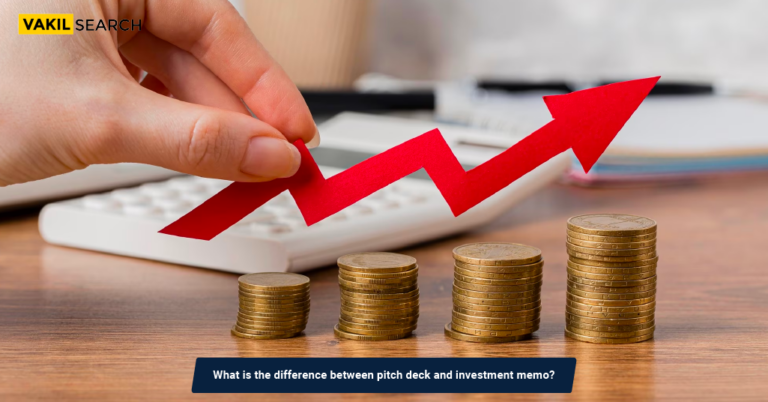Learn about the essential metrics to include in your pitch deck as an entrepreneur seeking funding. Impress investors with clear data and visual representations to secure the backing your startup needs.
Introduction
For entrepreneurs seeking funding for their new ventures, understanding the key metrics to include in a pitch deck is crucial. A pitch deck is a presentation that contains vital information about your business, designed to impress potential investors and secure funding.
As a new entrepreneur, you might have heard the term ‘pitch deck’ in entrepreneur groups or conventions. However, many founders are unsure about what it entails and how to leverage it for optimal results in attracting capital and investor connections.
In essence, a pitch deck is a comprehensive presentation that showcases your business and its potential to investors. To create an effective pitch deck that encourages investors to invest in your business, it should include essential metrics related to your startup.
If you’re in the process of assembling a pitch deck, this article is tailored to help you understand the critical metrics that will make your presentation stand out and entice potential investors to back your venture.
What is a Pitch Deck?
A pitch deck, also known as a startup pitch deck, is a concise yet vital presentation that provides investors with crucial information about your business, service, or product, along with your fundraising needs. It includes key metrics such as the target market, valuation, financial goals, and projections. The best pitch decks are visually appealing with simple, informative slides created using software.
Entrepreneurs use pitch decks to offer potential investors a detailed yet brief overview of their company, aiming to attract investment. Understanding what makes a good pitch deck is essential in the quest to secure the funding you need. Typically, a pitch deck consists of 10 to 20 slides that provide a concise summary of your company.
It’s important to note that investors often don’t make immediate investment decisions solely based on the pitch deck. Further meetings and negotiations are usually required to finalise the deal. The primary goal of a pitch deck is to secure a follow-up meeting with the investor and generate interest for further discussion.
Remember, the type of pitch deck you need may vary based on the stage your business is in and the purpose of the presentation. There are two key types of pitch decks:
Fundraising is all about effective storytelling. To create a winning pitch deck, you can refer to the template used by renowned Silicon Valley investor Peter Thiel, who was the first angel investor in Facebook, turning a $500K investment into more than $1 billion.
What Are Some Key Components of a Pitch Deck?
Crafting an impactful pitch deck is crucial for attracting investors to your business. Let’s break down the key sections to include:
- Introduction: Introduce your business in clear language, highlighting your unique value proposition.
- Problem: Explain the problem you’re addressing and how your solution helps people, using relatable storytelling.
- Vision: Summarise your business’s overall goal in a concise sentence.
- Target Market: Define your target audience and discuss competitors and market opportunities.
- Unique Selling Point: Showcase why your startup stands out and how it solves customers’ problems.
- Team: Highlight key team members’ expertise and experience that make your startup exceptional.
- Financial Details: Present your company’s financial health, growth projections, and business model using data visualisations.
- Investment Needed: Clearly state the amount of investment required, its purpose, and its significance for the company’s growth.
Remember, tailor your pitch deck for specific investors, researching their preferences beforehand. Personalisation increases your chances of securing funding. Prepare well with essential metrics and information, ensuring a compelling presentation.
What Are Some Key Metrics You Need to Include in a Pitch Deck?
Having a solid pitch deck requires including essential metrics that showcase your business’s health and potential. Here are some important metrics to incorporate:
Customer Acquisition Cost (CAC): Calculate the expenses incurred to acquire a new customer, including marketing, advertising, and sales costs. Ensure the CAC is competitive, sustainable, scalable, and profitable.
Churn Rate: Monitor how many customers leave after signing up, relative to the total customer base. Benchmark your churn rate with market research and assess it over time to ensure sustained growth.
Lifetime Value of Customers (LTV): Understand the ‘lifetime value’ of your customers, considering how much they spend over time. Investors look for businesses that can increase LTV compared to investment and CAC.
Customer Retention Rate (CRR): Measure how effectively your business retains customers. Focus on repeat customer revenue analysis and recurring revenue to assess CRR.
Profit Margins: Present your business’s earnings and use various reports like YoY analysis and product profitability matrix to clarify profitability to potential investors.
Gross Margin: Determine the revenue minus the expenses directly related to running the business. This metric shows how well your company operates in comparison to similar businesses, providing insights into future revenue potential.
By including these metrics in your pitch deck, you provide transparency about your business’s performance and growth potential, making it more appealing to potential investors.
Conclusion
Including the key metrics mentioned above in your pitch deck can significantly enhance your chances of securing investor funding. Metrics like Customer Acquisition Cost (CAC), Churn Rate, Lifetime Value of Customers (LTV), Customer Retention Rate (CRR), Profit Margins, and Gross Margin demonstrate your business’s health and growth potential, instilling confidence in investors.
Additionally, don’t forget to incorporate other vital data, such as the market size, growth rate, and customer count. These figures provide valuable insights into your business’s scalability and market potential.
To ensure clarity and comprehension, present these metrics using visual representations. Engaging charts, graphs, and data visualisations can make your pitch deck more compelling and easy to grasp. A well-structured and visually appealing presentation will captivate investors, fostering their trust and interest in supporting your business venture.
FAQs
What is an investment pitch deck?An investment pitch deck is a concise presentation that provides essential information about a business, product, or service to attract potential investors and secure funding for the venture. It typically includes key metrics, market analysis, financial projections, and the unique value proposition of the business. |
What is a startup pitch for funding?A startup pitch for funding is a brief and compelling presentation that entrepreneurs deliver to potential investors to seek financial backing for their new business ventures. It aims to showcase the business idea, market opportunity, growth potential, and financial projections to persuade investors to invest in the startup. |
What is a VC pitch deck?A VC pitch deck is a comprehensive presentation created by entrepreneurs to attract venture capital investors. It includes essential information about the business, market opportunity, growth strategy, financials, and the value proposition to secure funding for the startup. |
Also, Read:










